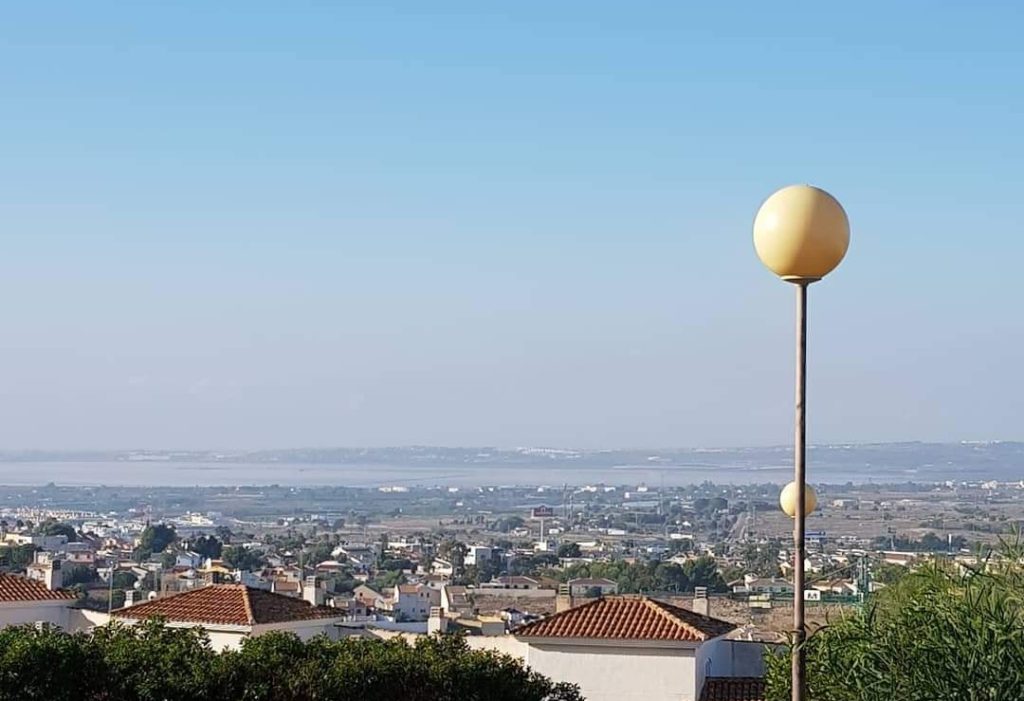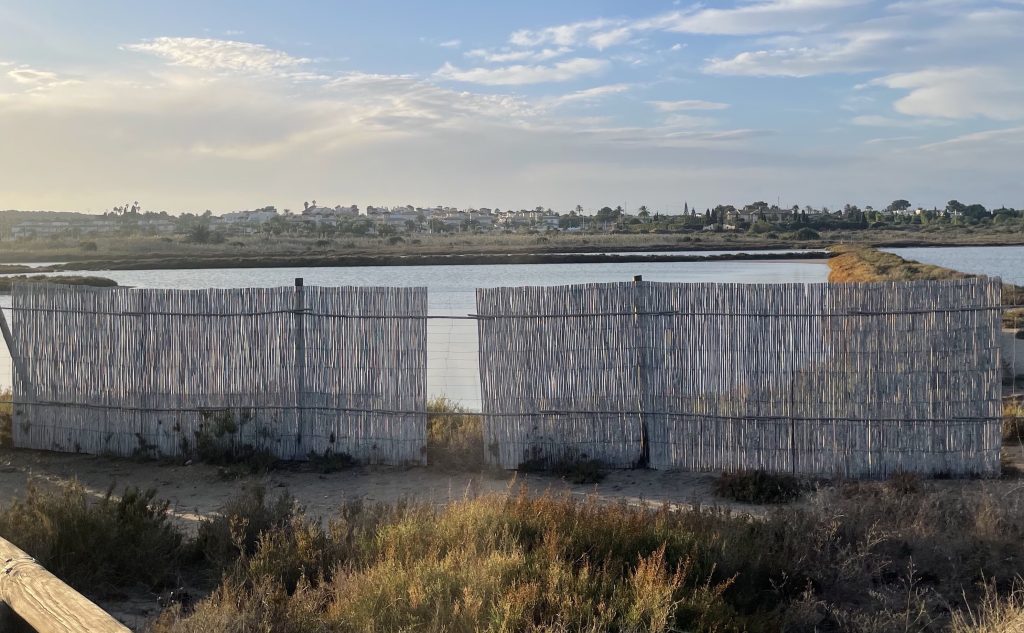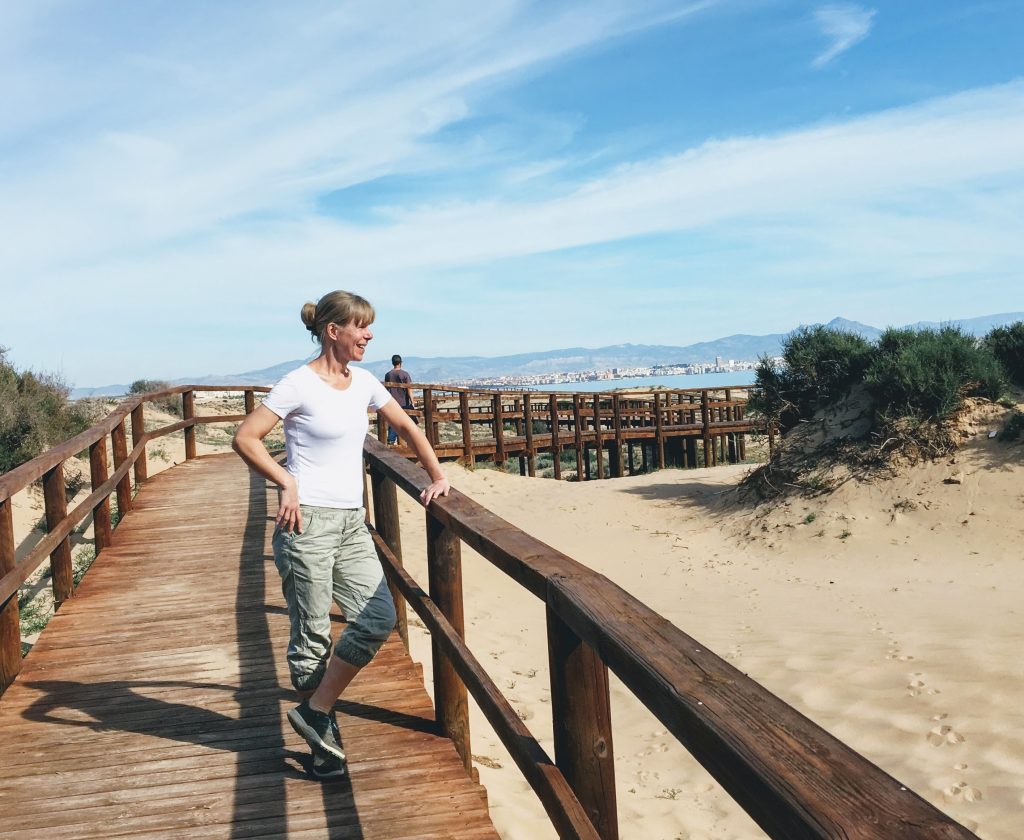Lagoons southern Alicante, wetlands, water and salt
Learn more about the lagoons southern Alicante.
The lagoons and Salt lakes you can see from Ciudad Quesada are much more than a stunning view.
They are part of the wetland nature spots and nature parks that you can find in Southern Alicante. These wetlands have a high ecological and cultura value ( see below).
On the top of the Ciudad Quesada hills you have a panoramic view of nature reserve and lagoon of La Mata .

This landscape is more than a beautiful background to one of the many stunning Vega Baja sunsets. More important, the salt lakes can also tell us a lot abut how people in the Alicante region developed their life around water and salt.
The salt lake is situated in the nature park called Parc Natural de Las Lagunas de La Mata. A bit further away you have the Natural Park of the lagoons of Torrevieja. The La Mata-Torrevieja lagoons occupying part of the municipalities of Guardamar del Segura, Torrevieja, Los Montesinos and Rojales.
The wetlands of Southern Alicante
The la Mata and Torrevieja nature park is, together with, the Salinas of Santa Pola (salt lakes and wetland area located in the lower part of the Vinalopó River) and el Hondo Nature park (close to Crevillente) part of the wetland triangle of southern Alicante. These areas are of high ecological value. These environments are protected by several agreements such as ZEPA Zone (Zone of Special Protection for Birds), LIC (Place of Community Interest), Ramsar Wetland or Natura 2000 Network .

Paradise for birdwatchers
If you are a birdwatch lover you should for sure visit one of the above places . Here you can find a variety of species using this areas for their resting areas on their long journey to Africa. It is a place to rest and feed. In spring they return to their habitual home.
Other species use these wetlands to nest or winter. There are also birds that live all year in the park. They are sedentary.
Depending on the season and the wetland you choose to visit you can find plovers, stilts, avocets and terns, as well as flamingos and black-necked grebes. In addition, you might spot white jars, cormorant, egrets, red partridge, picofina gulls and Audouin seagull.
Hiking or cycling in recreational area
The nature park Laguna de la Mata and of Torrevieja is a perfect outing, either by bike or hiking. You can reach the park by catching the bike lane outside the Ciudad Quesada entrance and start going towards Torrevieja .
If you have the whole day you have plenty to see as, once you have discovered la Laguna the La Mata, you just continue to the salt lakes of Torrevieja.
The two lagoons cover 2 100 hectares of water sheets ( 1.400 hectares and the La Mata lagoon 700 hectares). Between the two nature parks you can explore 3 ,700 ha protected nature area. Depending on which park you choose you find:
- Recreational picnic areas
- viewpoints
- observatories.
- one of largest flamingo populations in Spain.
- Salt produktion
Some history of the La Mata and Torrevieja lagoons
The lagoons have a long history. For example, in 1398, the Spanish t Crown invited the local inhabitants of the region transform the Torrevieja lagoon to harvest fish. However, the idea proved to be a bad one due the high salinity of the water. Nevetheless. Since the 15th century, the lagoons produced salt and were an important hub or harvesting and exporting salt. Torrevieja´s port received ships from all over Europe looking to buy salt.
Las Salinas de Santa Pola Nature Park
On my way from Villa Balea to Alicante or Elche I prefer to take the smaller roads. The motorway is a bit too busy for my liking. When you take the coast road you will pass the bay of Santa Pola. Here you will find the nature park las Salinas de Santa Pola. This park has 2,470 ha with large salt lakes and hosts:
- Flamingo and Stilts population
- fresh water ponds, dunes,
- a bech
- and small cultivation areas.

In addition, you can visit the salt mines of Bras del Port and Bonmatí. These mines have produced saltsince the 19th century. Thus, the Salt lakes are also important source of income for the Elche and Santa Pola region. The visit to the salt lakes offers you the possibility to explore a long-lasting industrial tradition. It goes as far back as to the Roman Empire. In addition, you can also learn about the current modern salt production industry
Clot de Galvany
Another nature park in the Elche and Santa Pola area is the Clot de Galvany nature reserve. This wetland has a number of ponds in the “Balsares” Elche area as well as several salt flats.
Through this area you will reach the dunes and pine forests of El Carabassí beach. It comprises an area of 355.84 ha. The Clot de Galvany offers a network of hiking trails. The wide diversity of ecosystems makes it the perfect place for bird watching.
For more reading on nature or culture excursions in the area you can hike along the River Segura on a sunny winter day.
Wetlands and its high environmental and culture value
The Salt waters of the region are a part of a production unit for salt mining as well as being wetlands with high environmental and culture value.
- These sites are tightly connected to the local history and economic development of the region that is linked to salt mining activity.
- There is a an archaeological heritage that should be preserved such as the salt canals, industrial architecture such as dams, towers and huts.
- Wetlands and l lagoons have a great capacity to extract CO2 from the atmosphere and store it.
- They are also complex systems in which biodiversity grows and thrives. You can find species of flora and fauna that deserve special protection.
- In for example La Mata lagoon there are several historic vineyards. These vineyards have a high cultural, oenological, nature and scientific value.
- The wetlands and lagoons offer a recreational landscape of beauty